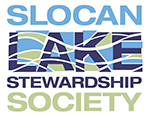What is the Bonanza Biodiversity Corridor?
The Bonanza Biodiversity Corridor (BBC), located between the communities of Hills and Summit Lake in Area H North, links Slocan and Summit Lakes at the north end of the Slocan Lake Watershed. The 14,000-hectare BBC encompasses the entire drainage of Bonanza Creek, with the following hydrologic boundaries: North-South (Summit Lake to the north shore of Slocan Lake) and East-West (from the watershed divide for Fitzstubbs Creek) to the western ridge line of the Valhalla Mountains.
The BBC represents the broad range of diversity present in the BC inland temperate rainforest, characterized by productive interior cedar-hemlock and high elevation subalpine spruce and fir forests. The valley bottom hosts a diversity of wetland types (e.g. swamps, marshes and fens) and a rare assemblage of plants.
Bonanza Biodiversity Corridor Landscape Map.
What vital role does the BBC play in the Slocan Lake Watershed?
The BBC, an important hydrologic system, contains one of the highest concentration of wetlands in the Slocan Lake Watershed. The numerous BBC riparian and wetland complexes act as an aquatic filter for sediment and provide vital nutrients to the lake supporting its water quality and fish habitat. Bonanza Creek is one of the primary spawning grounds for Kokanee on Slocan Lake. The BBC is recognized as a vital wildlife corridor connecting the Valhalla and Goat Mountain Ranges. With ongoing climate change, the BBC and its connectivity to other wildlife corridors will provide a refugia for several wildlife species of concern and continue to grow in ecological value.
High Level Overview of the Bonanza Biodiversity Corridor (KCP 2018).
What is currently threatening the ecological health of the BBC?
The primary threats to the overall ecological health of the BBC are direct loss or impairment of habitat, introduction of new invasive species, high-intensity wildfires, recreational pressure and the uncertainty of climate change impacts. For example, forest harvesting remains a significant threat to the hydrologic and terrestrial integrity of the corridor. The development of sustainable forestry practices would help reduce risk of fire and mitigate climate change impacts to habitats and water courses. Climate change and the risk of fire continue to represent the biggest threats to the health of the BBC. Wetland restoration will contribute to the protection of critical aquatic and terrestrial habitats by reducing climate change impacts.
Bonanza Biodiversity Corridor Cumulative Impact Map
What is the conservation strategy for the BBC?
The ongoing protection of the BBC, its ecosystems, habitats and hydrologic functioning remain at the core of SLSS conservation activities and currently sponsored projects. In 2014, SLSS co-founded the Slocan Wetlands Assessment & Monitoring Project which inventoried and mapped the BBC’s rich and diverse wetlands until 2016. In 2017, SLSS founded the BBC Working Group, a collection of professional ecologists, biologists, conservationists and naturalists whose purpose is to strategically and collaboratively achieve conservation of the BBC. In 2019, Environment and Climate Change Canada formally recognized the importance of the BBC for conserving species and habitats at risk through its funding of Kootenay Connect through the Canada Nature Fund. In 2020, Environment and Climate Change Canada formally recognized the BBC as a Community Nominated Priority Place for conservation through the Canada Nature Fund program.
More Information on the Bonanza Biodiversity Corridor as a Priority Landscape
The following report will provide you further background and information on the relationship of corridors, connectivity and climate change.
Kootenay Connect: Riparian Wildlife Corridors for Climate Change (2019).


